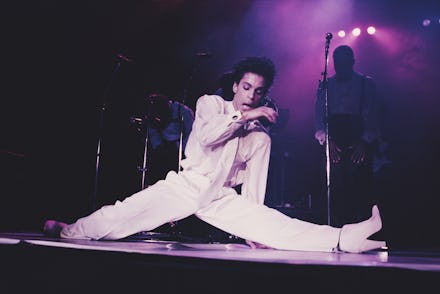The complicated, delicate work of publishing Prince's memoir

Prince’s posthumous memoir The Beautiful Ones, named after the haunting ballad on his 1984 album Purple Rain, hits shelves on Tuesday. It’s a trove of joyous selfies, childhood remembrances, and hand-drawn cartoons. It’s also hardly the book Prince intended to publish.
He wanted to write the biggest music book of all time. “The book should be a handbook for the brilliant community — wrapped in autobiography, wrapped in biography,” Prince said. “It should teach that what you create is yours.”
In January 2016, Prince recruited a young writer — Dan Piepenbring, an editor at The Paris Review who’d never written a book before. That suited Prince; he wanted someone smart, observant and poetic, but he didn’t fancy wrestling an ego. “He wanted to find some formal devices that would make the book a symbiosis of his words and mine,” Piepenbring wrote in an essay for The New Yorker this September. “It would be dope if, toward the end, our voices started to blend,” [Prince] told his biographer. “In the beginning, they’re distinct, but by the end we’re both writing.”
Prince died just three months later, in April 2016, and Piepenbring had barely scratched the surface. The Beautiful Ones was put on hold as the musician’s estate — being run by the courts, since Prince didn’t leave a will — sorted out various appraisals, revenue streams, claims from the family, and threats of litigation.
Eventually, Piepenbring was granted limited access to the archives at Paisley Park. “For someone who spent much of his career saying he didn’t like to dwell on the past, it seems like [Prince] was hanging on to everything,” Piepenbring told The Guardian. He began excavating the trove, digging through traces of Prince’s brilliance like an archaeologist.
The Beautiful Ones turned out more like a scrapbook than a manifesto, weaving Prince’s own writing about his earliest memories, most formative experiences, and most poignant lessons with the artifacts Piepenbring unearthed. Most of the photos in the book are of Prince before he made it big; he looks like a normal teenage goofball. The doodles, handwritten lyrics, and childhood remembrances are a fascinating glimpse into Prince Rogers Nelson’s psyche during his formative years.
Without the artist’s input from start to finish, the book is but a sliver of what Prince aspired it would be. But Piepenbring was saddled with a daunting task — completing (or abandoning) the biography his idol died before be could write. It may not live on as “the biggest music book of all time,” but The Beautiful Ones feels like a way to spend a little more time in Prince’s glow. It’s one more opportunity to better understand a man who seemed otherworldly — but who insisted on reminding fans of his humanity. “Certain words [like 'alchemy' and 'magical'] don’t describe me,” he told Piepenbring at one of their early meetings. “Funk is the opposite of magic,” Prince said. “Funk is about rules.”
Wishing The Beautiful Ones had turned out exactly as Prince intended it is futile — it would’ve required Piepenbring to do some conjuring himself. Deciding to publish Prince’s memoir posthumously would be a complicated, delicate calculation for almost anyone. But its existence is a net-positive, even if it’s just as a balm for grieving fans. It seems poignant that the man Prince chose to tell his story ultimately decided how to frame the artist’s legacy for the rest of us.